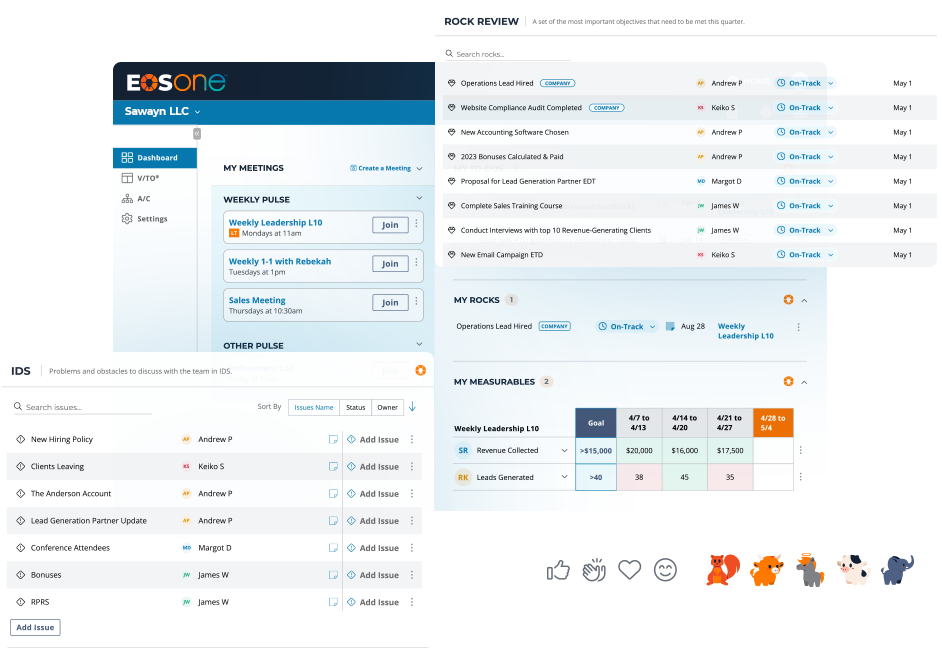You are a visionary business owner with ambitious plans. You’ve invested in your business and hired a team of superstars. They are working hard – you see it every day – yet, somehow, you are not hitting your milestones. You aren’t advancing in your goals. You and your team are getting more and more frustrated. You’ve got all the ingredients for success, but instead you are stumped, stuck, and stymied.
In the first blog “Stumped, Stuck, and Stymied? An Integrator Can Get You Out of the Mud” on being stumped, we looked at the crucial role an Integrator plays in achieving your business objectives. But what if you have an Integrator and still aren’t able to execute on your plans?
Revving Up the Execution Engine
You know what great execution looks like: the trust and respect, the structure and organization, the consistency and reliability, the results and outcomes. Effective execution has been likened to a well-oiled machine, but that image lacks depth. It’s more like swinging onto a highway in the latest Corvette, Audi, or Porsche (pick your preference!) and feeling the perfectly-tuned vehicle eat up the roadway with limitless power and maximum smoothness.
Like the inner workings of the car, effective execution demands the precise functioning of many interdependent parts. Given the complexity of your business, if you get stuck, where do you look first?
My recommendation, based on working with diverse businesses in multiple industry verticals, is to zero in on four key components that are essential to the “execution engine”: expectations, alignment, accountability, and cadence. Companies that fail to execute well are typically lacking in one or more of these four areas.
1. EXPECTATIONS
If you have hard-working team members but they aren’t accomplishing what you want, chances are that they don’t know what you want. Otherwise, their hard work would be paying off.
Too frequently, leadership team members make assumptions about roles and responsibilities. You assume someone is going to do A, B, and C, and that person assumes you want them to do X, Y, and Z. The disconnect might not be quite that extreme, but you see the point! Any disconnect means that effort is being wasted and your desired outcomes are in jeopardy.
If you have not communicated expectations for your leadership team individually and collectively and verified their understanding, you are all working under potentially faulty assumptions. The great news? This is readily fixed with a good, open conversation.
2. ALIGNMENT
Alignment – or, rather, the lack of alignment – is the next common gremlin that mucks up execution.
Alignment in this context has to do with your long-term vision for the company. What are you striving to achieve in terms of your products, your impact, your values, your services? Does each team member – finance, sales, marketing, production, etc. – know how they play into this big picture view? Are they onboard? Does the vision for your company inspire passion in your people?
If you have a lack of alignment, you’ll need to do some serious work to clarify and communicate your vision so that your leadership team can claim it for their own.
3. ACCOUNTABILITY
In a healthy company, accountability is a word that energizes and mobilizes people – not a word that brings up negative connotations. It flows naturally out of clear expectations and an aligned vision. After all, people who know what they need to do and want to do it well are open to disclosing where they are hitting the mark and where they may need help to deliver.
Mutuality is at the core of robust accountability. Accountability ultimately is not about “putting someone on the spot” or “checking up on them.” Rather, it is making sure that the team as a whole is functioning well and taking corrective or supportive action where necessary so that little problems don’t become big ones.
If you have been glossing over team accountability or handling accountability in a negative manner, hold yourself accountable to changing your approach and watch your execution speed up.
4. CADENCE
Finally, paying attention to cadence is critical for excellent execution. While accountability tends to view matters from an individual and shorter-term perspective, cadence views the business from the collective and longer-term vantage point.
You should establish a cadence of quarterly, semi-annual, and annual reviews of your teams and your business as a whole to assess the health of your overall goals. During these high-level meetings, your leadership team members can share their accomplishments, plans, and initiatives. Any issues or obstacles can be brought up and addressed. These meetings will regularly confirm if everyone has a clear understanding of expectations, is aligned on the company vision, and has been practicing accountability. The meetings also provide an opportunity for course corrections as necessary.
If you do not have a set cadence of leadership meetings to review your company’s progress as a whole, do not delay in sending out a calendar invite and agenda!
You may be frustrated with sputtering execution … but by fine-tuning your expectations, alignment, accountability, and cadence, you’ll be speeding down the highway in no time!



